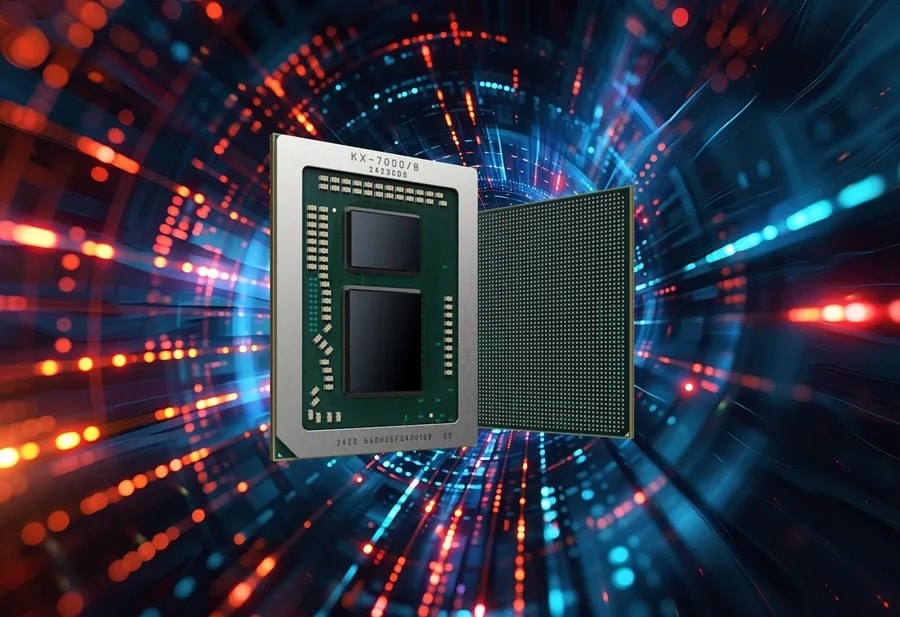The company showcases its “CPU + AI” strategy at WAIC 2025 with solutions for servers, workstations, and personal computers featuring local inference capabilities for language models.
Zhaoxin has revealed its renewed roadmap for advancing artificial intelligence computing in China during the World Artificial Intelligence Conference (WAIC) 2025, centered around processors designed and manufactured domestically. At its booth in Pavilion H1-D812, the company introduced the KH-50000, its most advanced CPU for servers, and the KX-7000N, aimed at PCs with built-in local AI capabilities thanks to an integrated NPU engine.
Zhaoxin’s approach emphasizes technological sovereignty: chips with proprietary architecture that are compatible with local operating systems and ecosystems. With this strategy, the company aims to reduce reliance on foreign solutions such as Intel or AMD, while offering a national alternative for data centers, workstations, AIPCs, and embedded devices.
KH-50000: 96 cores, PCIe 5.0, and DDR5 for high-performance data centers
The Zhaoxin KH-50000 is the company’s flagship processor for server and AI cluster markets. Designed using a chiplet architecture, it features up to 96 cores running at 3.0 GHz, a significant upgrade from the 32 cores of its predecessor (KH-4000), along with a 30% increase in IPC, support for 384 MB of cache, 12 DDR5 memory channels, and 128 PCIe 5.0 lanes.
This generation also integrates the ZPI 5.0 interconnect, comparable to AMD’s Infinity Fabric, optimized for massive parallel computation workloads such as AI model training and inference, big data processing, and HPC environments.
The proposal aligns with China’s national strategy to develop fully sovereign AI infrastructure—from hardware to software—covering the entire stack.
KX-7000N: CPU with integrated NPU for local AI in personal computers
Alongside the KH-50000, Zhaoxin unveiled the KX-7000N, an enhanced variant of its KX-7000 processor, targeted at consumer and professional PCs. The key innovation is the incorporation of a high-performance NPU (Neural Processing Unit), enabling local execution of AI models without relying on the cloud.
This chip, already included in Lenovo KaiTian solutions, enables use cases such as personal assistants with language models, speech recognition, image generation, and more—all offline and with sensitive data protected. According to Zhaoxin, this approach significantly reduces latency and power consumption while ensuring user privacy and security.
The company also announced plans for its next-generation AIPCs, which will feature more cores, PCIe 5.0 support, and expandable AI capabilities via additional compute modules.
Beyond Processors: Vertical solutions integrating proprietary CPUs and AI models
In addition to introducing new processors, Zhaoxin revealed several solutions developed with local ecosystem partners, targeting strategic sectors:
- Public Administration AI: KaiTian stations equipped with generative AI for drafting official documents trained on government corpora, with functions for drafting, reviewing, and exporting in standardized formats.
- Intelligent Education: Platforms with locally deployed DeepSeek models in classrooms and interactive screens.
- Computing and Decision-Making: Servers with mathematical optimization software like COPT and ORLM models, used in logistics, energy, and planning.
- Generative Content and Multimedia: Solutions like “DongDong,” an intelligent TV assistant based on language and image models, developed by Oriental Cable.
- Industry and Healthcare: Proposals for medical diagnostics, industrial automation, financial services, and citizen support, all based on local deployments with Zhaoxin CPUs and compatible accelerators.
China solidifies its technological foundation for the post-x86 era
Zhaoxin stands as a pillar of China’s national strategy to replace foreign technology in critical sectors. By combining proprietary processors, AI ecosystems trained domestically, and a vertically integrated approach, the company aims to lead a new “end-to-end” wave of innovation in sovereign computing.
WAIC 2025 has served as a vital platform to demonstrate that the domestic industry can not only imitate but also compete in fields like AI, where hardware control has become a strategic geopolitical factor.
With the KH-50000 and KX-7000N, Zhaoxin illustrates that the pursuit of digital sovereignty in AI has moved from aspiration to deployment on national silicon.
References: elchapuzasinformatico, mp.weixin.qq.com, mp.weixin.qq.com – KX-7000, mp.weixin.qq.com – XTD30

